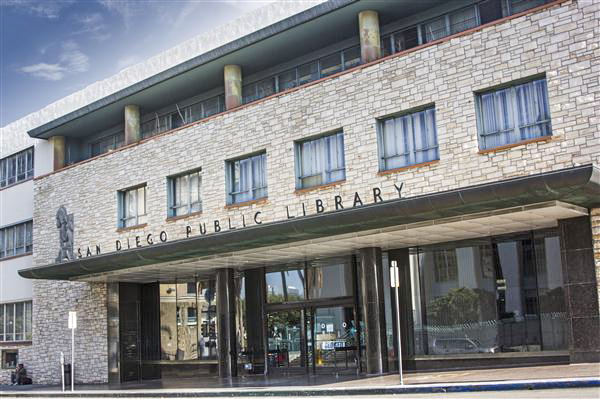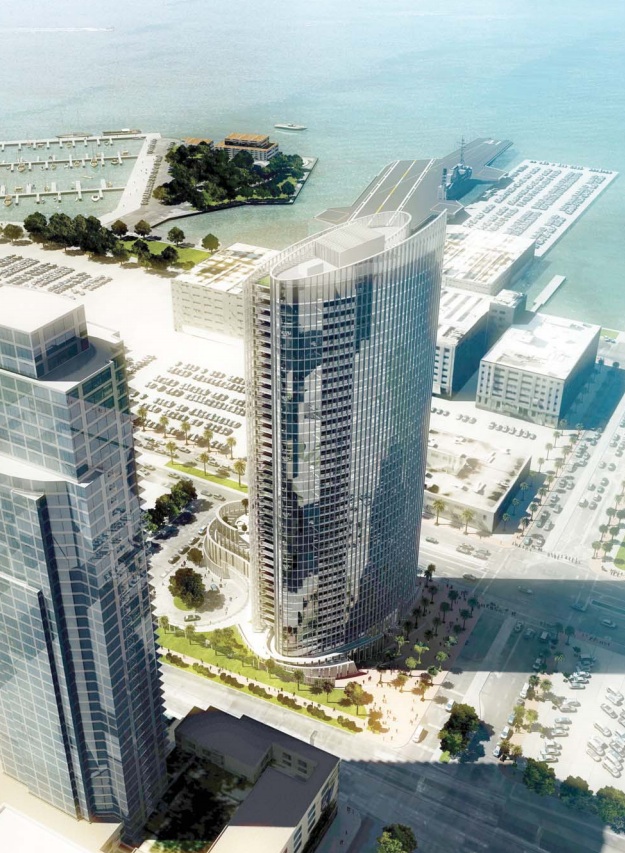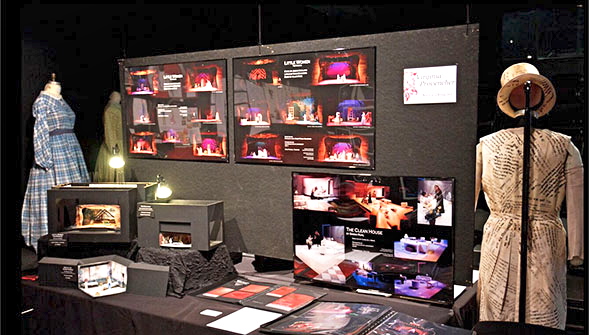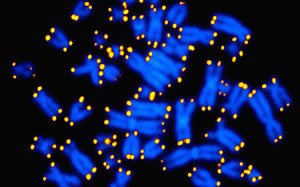Daily Business Report-May 11, 2015
The caricature of Doug Manchester, by Jason Luper, appeared on the cover of SD METRO Magazine in March 2012, shortly after Manchester purchased the Union-Tribune.
Doug Manchester’s Big Dream
For the Newspaper Never Came Through
The soon-to-be ex-U-T San Diego owner wanted a lot more out of his newspaper purchase than he ended up getting
By Liam Dillon | Voice of San Diego
In the beginning, there was bluster. And there was a lot of it.
The same day hotel magnate Doug Manchester bought the San Diego Union-Tribune for $110 million three and a half years ago, his partner John Lynch said the paper was going to call out “obstructionists” against the duo’s dream of building a new stadium for the Chargers.

This was only the first of many pronouncements the Manchester-Lynch tandem made in the brief time they owned San Diego’s largest media company. Their dream of a new Chargers stadium is one of many to have floundered.
At the time of Manchester’s purchase, there were two beliefs for why the longtime San Diego lightning rod wanted his hands on the U-T. He wanted to use the paper as a bullhorn for his interests — football, military, Republicans — and he wanted the sweet Mission Valley property on which the newspaper sits. The second part of that equation still lives — Manchester kept the land when he sold the paper to the Tribune Company for $85 million — but the first was, by any measure, a failure.
Consider the things Manchester and Lynch fought the hardest for:
• They published plans in full-color on the front page for a new Chargers stadium development Downtown. They proclaimed it the paper’s No. 1 priority. No one ever did anything with the idea. Today, the Chargers’ stadium situation is as dire as it’s ever been.
• They had not one but two front-page editorials boosting Carl DeMaio for mayor. DeMaio’s now a radio talk show host. Manchester even lost a fight among other Republican bigwigs to allow DeMaio to run for mayor again when former Mayor Bob Filner floundered.
• They wanted to destroy the Unified Port of San Diego for supporting industry at the Tenth Avenue Marine Terminal instead of tourism and a stadium. The port’s still there.
• They called Barack Obama the worst president in U.S. history and warned of apocalyptic consequences if he were re-elected, including the removal of, “In God We Trust” from our money. Obama was re-elected and our money’s the same.
• They invested in a new TV station — UT-TV — that would become “a nationwide network of national news that all of the major metros contribute to,” Lynch said. He projected it would compete with CNN or Fox. Just six months after saying that, the U-T laid off much of the station’s staff and it ceased broadcasting.
It’s worth considering why Manchester didn’t get what he wanted. The region is pretty evenly split between Democrats, Republicans and independents so Manchester and Lynch’s brand of conservatism was out of step. It’s also true that newspapers don’t have the same pull they used to. The idea of a sports columnist convincing the public to build a football stadium — like Jack Murphy did in 1967 — is unthinkable today.
Manchester likely realized all this much sooner than this week. Rumors that the paper was on the block went back more than a year — to the point that Manchester wrote a front-page letter to readers last June denying that the paper was for sale.
And things have gotten noticeably calmer at the paper lately, a period that overlapped with Lynch’s phasing out and ultimate exit. A sports website wondered if the U-T would cover the Chargers stadium situation with any credibility now that Manchester is gone. After all, sports columnist Tim Sullivan was axed in 2012 after management decided he was too much of a stadium obstructionist. But the U-T-as-unfailing-stadium-booster narrative falls apart in the face of business columnist Dan McSwain’s excellent recent coverage (See (http://www.utsandiego.com/news/2015/may/02/nfl-stadium-kroenke-rams-chargers/).
It appears Manchester did make a bit of money out of his purchase of the newspaper and could get more from the real estate. He wants to put two seven-story buildings and 200 residential units on the property. The project’s working its way through City Hall now.
It must be disappointing that he might only be getting some more buildings out of the deal. Remember this is a man who cares a lot about legacy. When he sold his most high-profile project, the giant waterfront Hyatt hotel next to the Convention Center, he required his name stay on it for 20 years.
“Why not?” he told us.
In 2012, Manchester officially changed the name of the newspaper from the San Diego Union-Tribune to U-T San Diego. The new owners, however, are already using the old name again.
Liam Dillon is senior reporter and assistant editor for Voice of San Diego. He leads VOSD’s investigations and writes about how regular people interact with local government.
____________________________________________

San Diego Officials to Explore New Use
For Former Library Building Downtown
The city of San Diego Monday will take the first step in finding a new use for the old Downtown Central Library building when it releases a “Request for Information” document to potentially interested organizations.
The building at 820 E St. has been vacant for about a year-and-a-half, since the new Central Library opened near Petco Park.
City Deputy Chief Operating Officer David Graham said universities, start-up companies, life sciences firms and nonprofits have contacted city officials about the availability of the three-story structure.
“One of the main reasons that we went with the idea of doing an RFI is actually because there are so many diverse interests, both long-term and short- term,” Graham said during a City Council hearing on Mayor Kevin Faulconer’s proposed budget for the fiscal year that begins July 1.
City officials have also conducted an assessment of the building’s condition and upgrades that will be needed to comply with the Americans With Disabilities Act, according to Graham. He said a significant investment will be needed to improve the building, though specific dollar figures won’t be part of the initial process.
The city of San Diego will issue the RFI jointly with Civic San Diego, which assists the city with Downtown development projects. The document will be posted on the Civic San Diego website, will be linked to the mayor’s web page, will be sent to organizations that have previously expressed interest, and will be delivered to Civic’s general distribution list.
Reese Jarrett, the Civic San Diego president, said the responses due 45 days after the RFI is issued will give officials a good idea of how to reactivate the space.
— City News Service
Housing Sales in San Diego County Perk Up in April
Housing sales perked up around the county in April, pushing the median price of a single-family home to $520,000, the San Diego Association of Realtors reported Friday.
The association said 2,156 houses sold in April, an 8 percent increase over March and a 1 percent upward nudge over April 2014. A bit over 1,000 condominiums or townhouses changed hands in April, 4 percent better than March but an 8 percent drop from the same month last year.
The $520,000 median sales price of a house was 1 percent higher than March and a 6 percent hike from April 2014.
Condos had a median sales price of $344,250 last month, which was down 1 percent from the prior month but up 4 percent from the same time last year.
“It is certainly encouraging to see our strong spring season pick up even more steam,” said association President Chris Anderson. “We expect the numbers to continue to climb as we move into summer, which is also when we expect to see more homes come onto the market.”
Typically, for-sale houses and condos change hands in just under six weeks, according to association data.
— City News Service

Name This Building for $5,000
Nat Bosa’s 41-Story Condo Tower
Developer Nat Bosa is asking the public to name his latest Downtown development — a 41-story condo tower at Pacific Highway and Broadway that Bosa Development expects to finish by 2017.
The naming competition, which closes May 31 and offers a cash prize of $5,000 to the winner, is part of an exhibition that will launch in late summer. Called “RETHINK Downtown: Behind San Diego’s Skyline,” the exhibit will be an interactive experience that will allow visitors to personally interpret the history and evolution of the area, the urbanism movement and its effect on society, according to Bosa. It will feature videos, scale models, photographs, historic views/maps, displays along with a speakers series.
Details on the competition are at www.rethinkdowntown.com.
The oval glass residential tower is designed by architect Kohn Pedersen Fox in collaboration with Vancouver-based Chris Dikeakos Architects. Rising 41 stories, the residential tower will feature ocean, bay and city views.
The Canadian developer is betting that buyers will give up as much as $3 million for one of the 221 units in the high-rise. Prices are expected to start in the $700,000s.
Bosa Development intends to begin building another Downtown project sometime this year.

Behind The Scenes
SDSU design students will showcase their
work at the Design and Technology Showcase today
In the world of theatre and film, the bright lights, elaborate sets and exquisite costumes can really make a show.
The behind-the-scenes world of design technology is revealed at San Diego State University’s seventh annual Design and Technology Showcase from 10 a.m. to 8 p.m. today in the Experimental Theatre.
The Showcase is tradition in the School of Theatre, Television and Film and features the people, props and technology responsible for bringing theater and film productions to life. This one-day exhibit will feature the work of theater design and technology graduate and undergraduate students, as well as provide the public an opportunity to speak with each of the students about their work.
“The showcase is a place where our students in design and technology present their work to the world,” said Denitsa Bliznakova, costume designer and professor.
This not only gives those outside of theater and film a look at the artistry and craftsmanship that goes into bringing these productions to life, but also brings industry professionals to campus to see the students’ work. Professionals often come to this showcase from local playhouses, which can lead to potential job opportunities
“This showcase is a really great way of introducing our young designers to the professional world,” Bliznakova said.
Third-year design and technology graduate student Conor Mulligan will have his work featured at the showcase. He understands and stresses the importance of this showcase in building local relationships.
“I am interested in solidifying the current relationships I have in the San Diego theater community,” said Mulligan. “I loved working in the San Diego theater community and want to continue collaborating with the people I had the pleasure to work with.”
Mulligan plans on showing five of his projects that demonstrate his full skillset, which includes photos, lighting examples and 3-D renderings.
“I am planning on showing the strongest produced work I have in my portfolio,” Mulligan said.
This will be the case for all students participating in the showcase, as they all want to impress their potential future employers. Other students will feature their work in costumes, writing, scene design and technical direction.
— SDSU NewsCenter
Post-Traumatic Stress Disorder
Linked to Accelerated Aging

Researchers at the UC San Diego School of Medicine and Veterans Affairs San Diego Healthcare System suggest that people with post-traumatic stress disorder (PTSD) may also be at risk for accelerated aging or premature senescence. The research is reported in the May 7 online issue of American Journal of Geriatric Psychiatry.
“This is the first study of its type to link PTSD, a psychological disorder with no established genetic basis, which is caused by external, traumatic stress, with long-term, systemic effects on a basic biological process such as aging,” said Dr. Dilip V. Jeste, professor of psychiatry and neurosciences and director of the Center on Healthy Aging and Senior Care at UC San Diego, who is the senior author of this study.
Researchers had previously noted a potential association between psychiatric conditions, such as schizophrenia and bipolar disorder, and acceleration of the aging process. Jeste and colleagues determined to see if PTSD might show a similar association by conducting a comprehensive review of published empirical studies relevant to early aging in PTSD, covering multiple databases going back to 2000.
“These findings do not speak to whether accelerated aging is specific to PTSD, but they do argue the need to re-conceptualize PTSD as something more than a mental illness,” said first author Dr. James B. Lohr, professor of psychiatry. “Early senescence, increased medical morbidity and premature mortality in PTSD have implications in health care beyond simply treating PTSD symptoms. Our findings warrant a deeper look at this phenomenon and a more integrated medical-psychiatric approach to their care.”

MiraCosta College Receives
National and State Marketing Awards
MiraCosta College has received national and statewide awards for its marketing efforts in 2014. The college earned a national Paragon Award from the National Council for Marketing and Public Relations (NCMPR), the largest organization in the world that represents marketing and public relations professionals at community colleges.
MiraCosta won third place for its Transforming Lives newsletter, a joint publication created by the Public Information Office and the College Foundation.
MiraCosta also received two awards at the statewide level. The Community College Public Relations Organization (CCPRO) PRO Awards recognize outstanding work by California’s community college marketing and public relations professionals. MiraCosta won the first place award for its Arts & Events brochure, and third place for its Annual Report publication.
publication.
“These awards were the result of the hard work of a number of talented individuals representing the college’s Public Information Office and the college foundation,” says Director of Marketing and Communications Cheryl Broom.
Carlsbad Headquarters Building Sold
San Francisco-based Graymark has purchased a 74,000-square-foot corporate headquarters building at 3209 Lionshead Ave. in Carlsbad for $12.2 million. The seller was LBA Realty. The property is leased by prAna, a wholly owned subsidiary of Columbia Sportswear Co. DTZ represented the buyer and seller.
Law Firm Launches New Practice Group
San Diego law firm Higgs Fletcher & Mack has launched a Privacy and Information Security Practice Group.
“We understand the role data security plays in all types of businesses,” said James J. Eischen, a firm partner and member of the group. “Our focus is to help businesses of all sizes develop reasonable, cost-effective solutions to help reduce the risk of data breaches.”
The practice group can perform a number of legal services for clients, including providing comprehensive privacy and security risk assessments and compliance audits as well as employee education and training. The team can also develop and draft privacy notices for businesses to provide customers as well as internal privacy policies and procedures for the appropriate collection, use, disclosure, storage and destruction of electronic data throughout the information life cycle.
In addition to Eischen, other Higgs attorneys that will be part of this group include William M. Low, Steven J. Cologne, Michael J. Hoisington and Charles F. Reidelbach.


